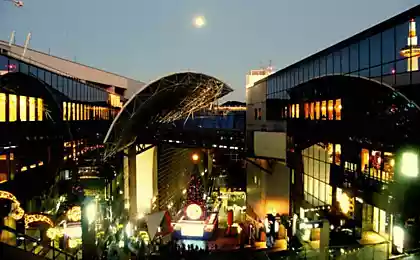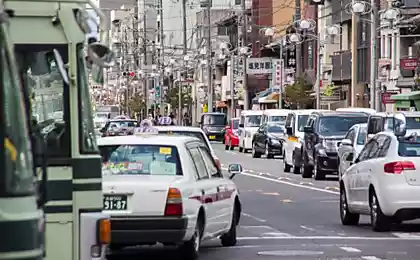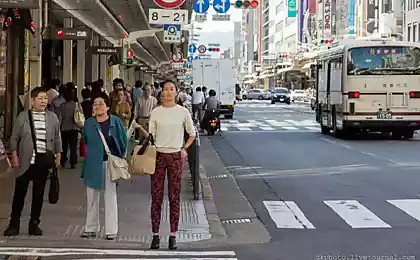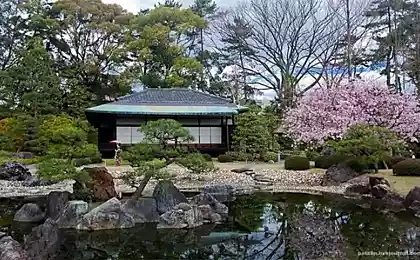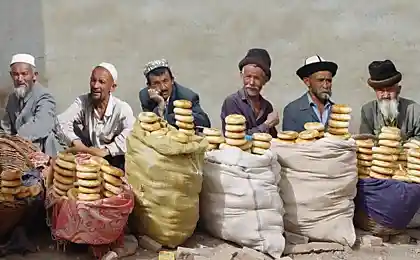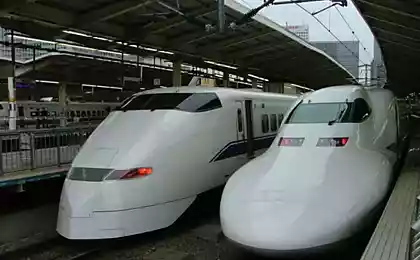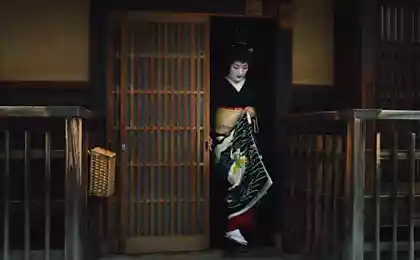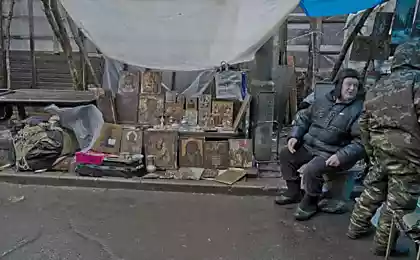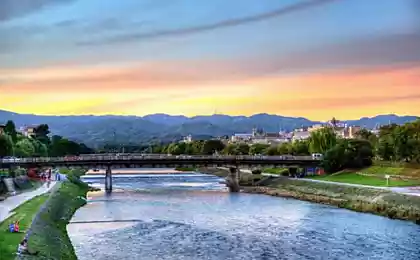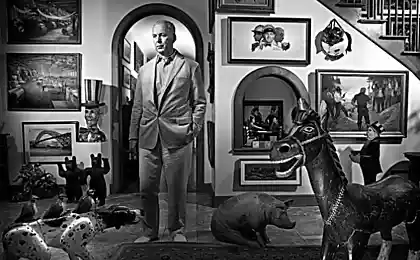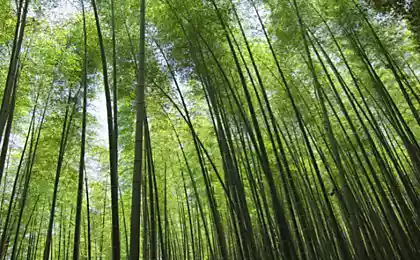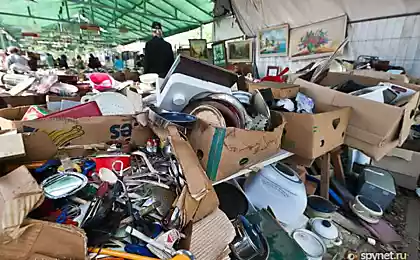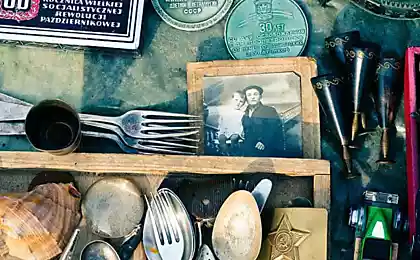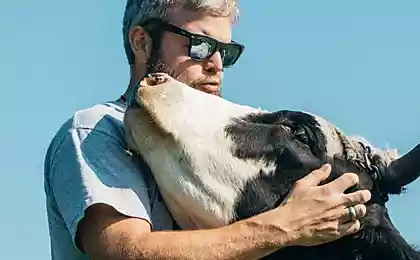771
Flea Market in Kyoto
21 of every month in Kyoto arranged a large flea market, popularly called Kobo-ichi - "market Cobo", called Kobo Daishi - the patriarch of Shingon esoteric Buddhism community.
Flea market is held in the oldest kiotoskom temple Toji, once headed by Kobo Daishi. On the day of memory of the patriarch, the number 21 here, as in many other singonskih temples are memorable service.
43 photos via live_report
1. It has long been in those days, pilgrims flocked here, and that was the starting point for this popular flea market, which has become one of the attractions of the Old Capital.
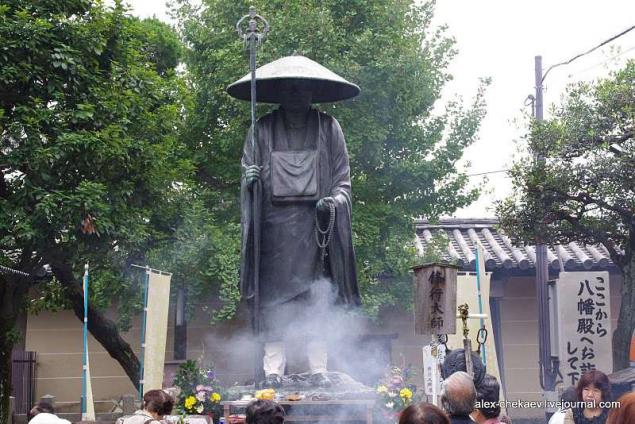
2. These days the walls and on the territory of the temple complex - peer Kyoto - there are stalls and stalls selling everything you want.
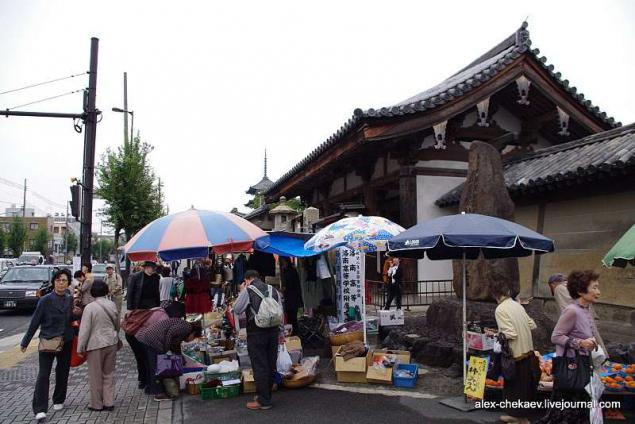
3. Many people come here not only for shopping, but for new experiences, the atmosphere of the holiday and the market life. It is popular among tourists.

4.
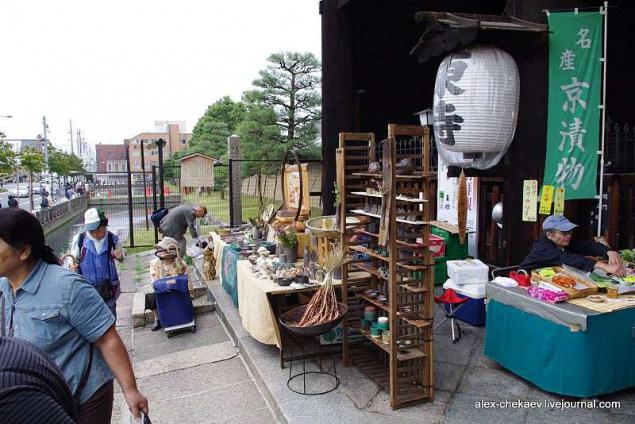
5. On the shelves you can find everything from food and clothes to souvenirs, antiques and artwork.
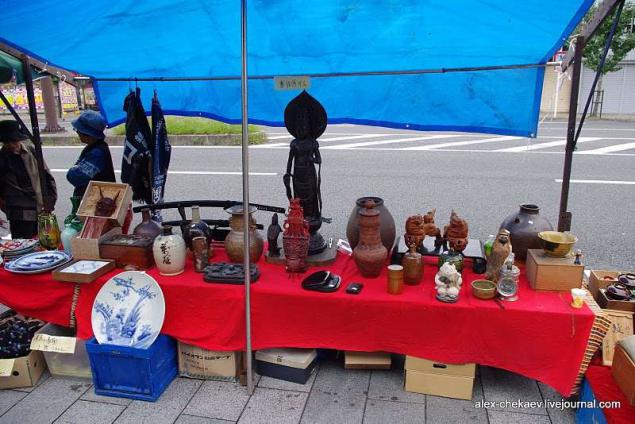
6.
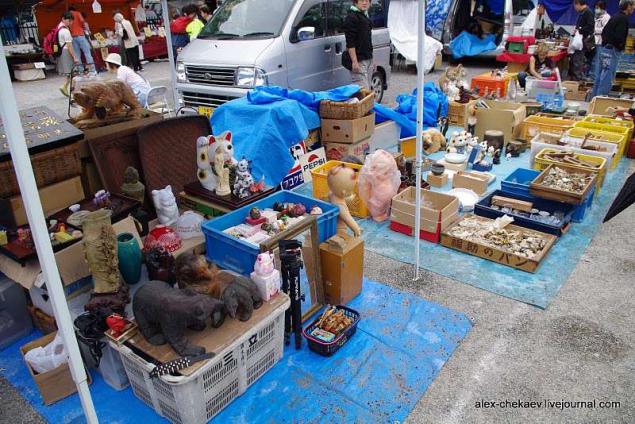
7.

8. Autumn in Japan is a season abundant Persimmon. Sometimes they say: "Taste of Autumn - Persimmon." However, as the taste of autumn is considered chestnuts and matsutake mushrooms.
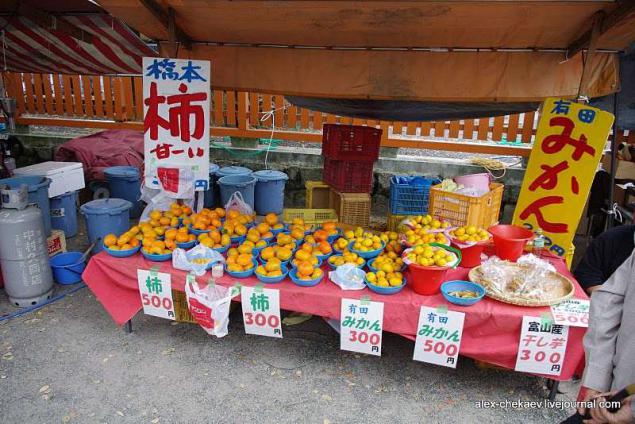
9. "Persimmon mythical" - good as rumor
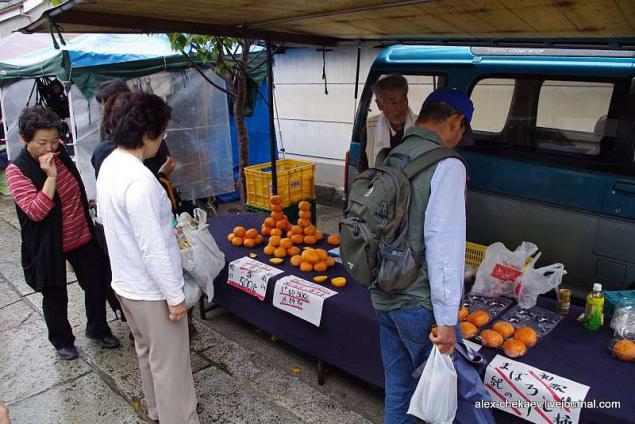
10. Persimmon these days very much - it is everywhere: in stores, in restaurants, on the trees and just in the land.
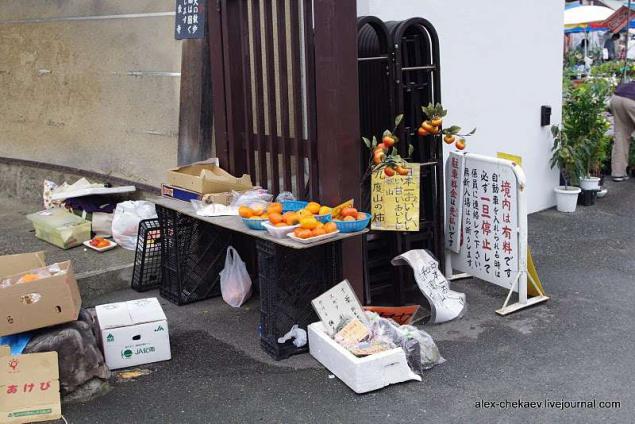
11. Here's another autumn taste - chestnuts. They are good in themselves, and cooked with rice and mushrooms.
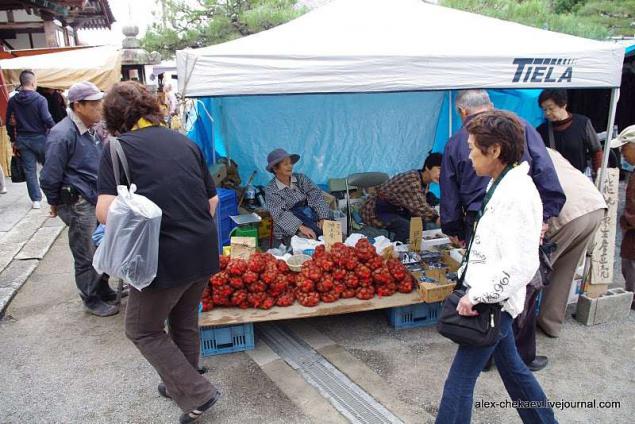
12. Pickles, who once were one of the pillars of the Japanese diet, popular to this day. Variations of flavors across the country have made a great souvenir delicacy. Unfortunately, most of the foreigners do not understand their charm.

13. And this is another popular supplement to rice and other dishes "tirimen" - small dried fish.
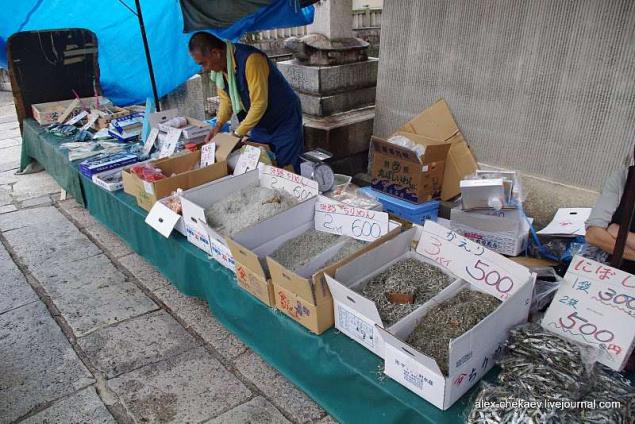
14.
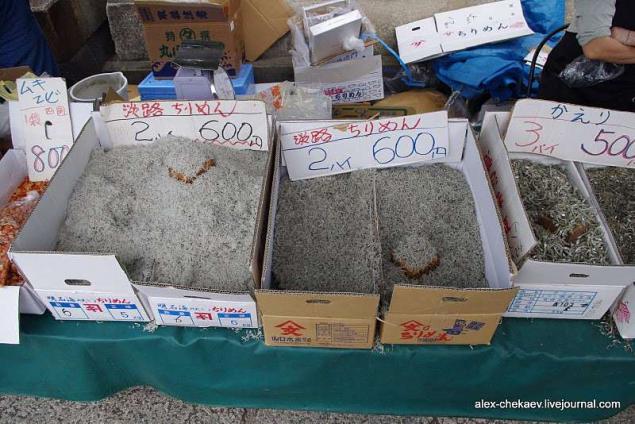
15. That "tea" from algae. Mekabu-cha.
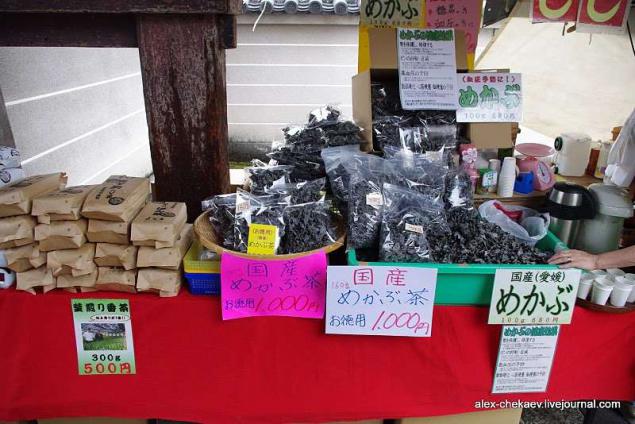
16. Hungry visitors can snack dumpling octopus. This dish is called "takoyaki" (literally - fried octopus) and came from nearby Osaka.

17. Lovers of sweet - "fried sea bass" or "taiyaki." In fact, it is not bass, but made in the form of fish waffles stuffed with sweet bean.

18. Vegetarians can enjoy corn.

19. In the neighborhood are selling antique clocks.
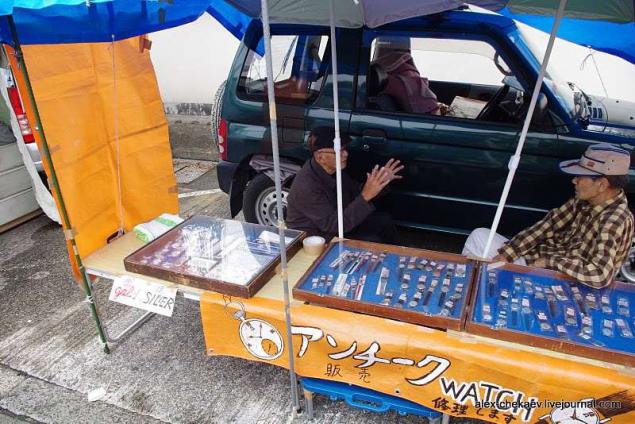
20

21. Yarn and knitting go well in the pre-winter period.
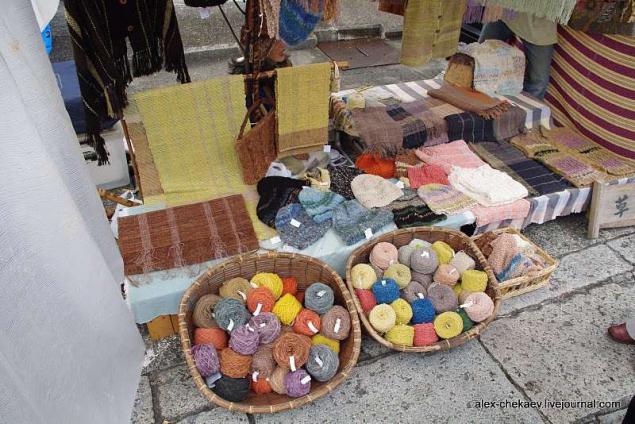
22. But the counter with a variety of fabrics, colors and patterns.

23. There are trays of wicker - baskets. handbags. casket. interior.
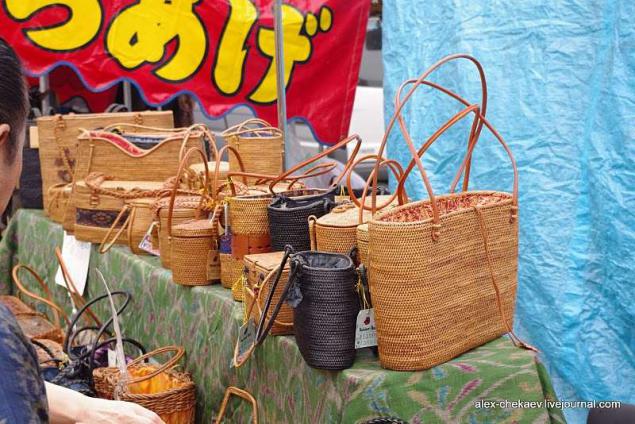
24.
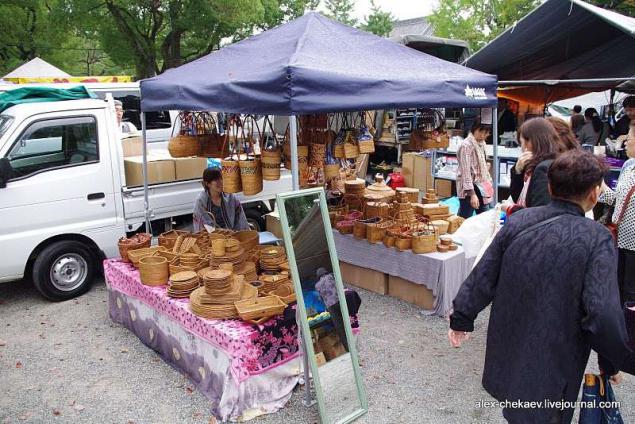
25.

26. Author's handmade knives.
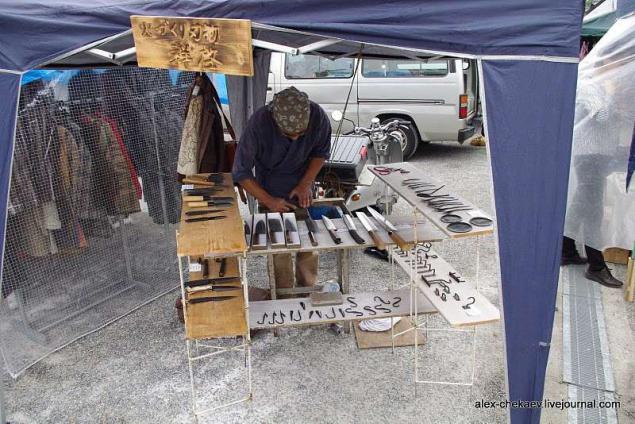
27.
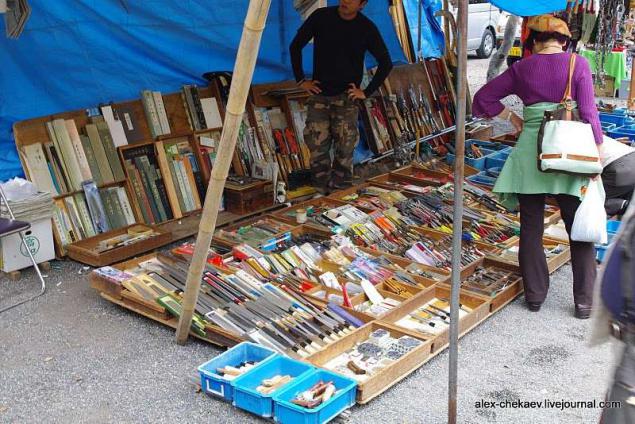
28. This artist sells funny signs. Some just decoration. some quite functional - the inscription "Do not disturb", "be back soon" made to order.
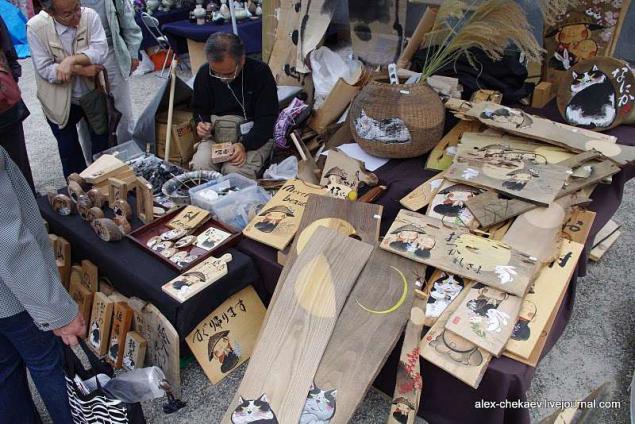
29.

30.
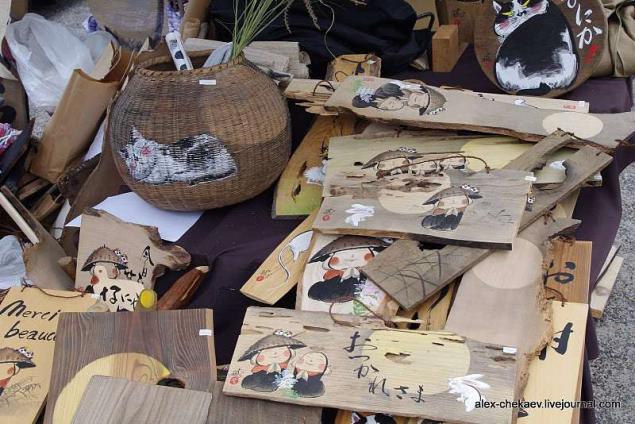
31. Who can tell what kind of balls and why they are needed?
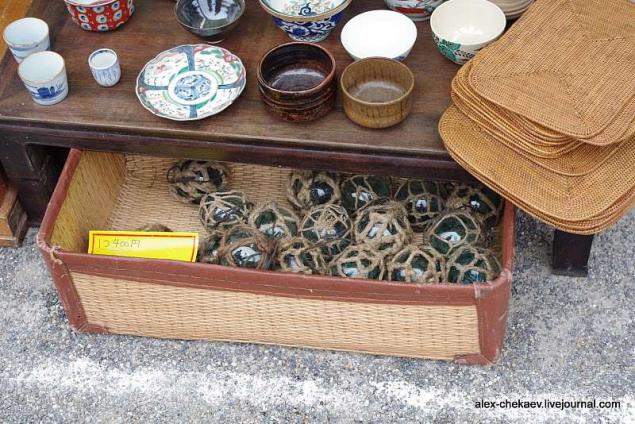
32. Corner ceramics. There are many shops oochen not only in the market, but everywhere in Japan. Japanese love ceramics and are willing to buy her home or as a gift.
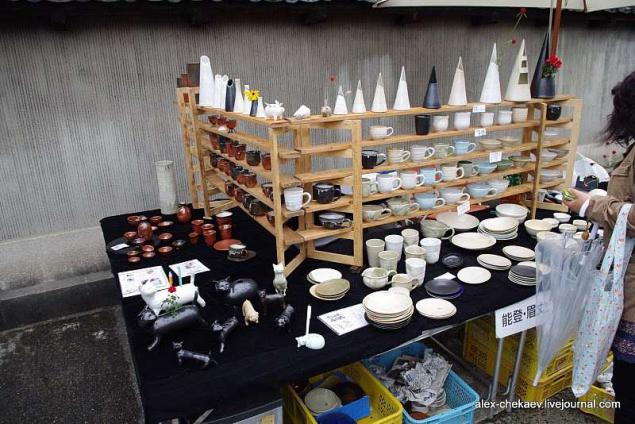
33. Tale!
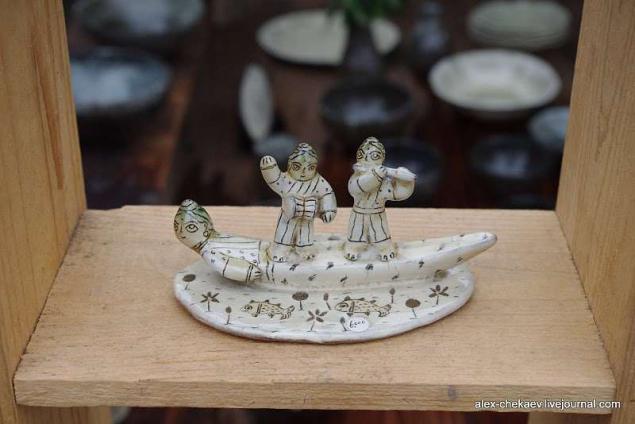
34. Things are older.
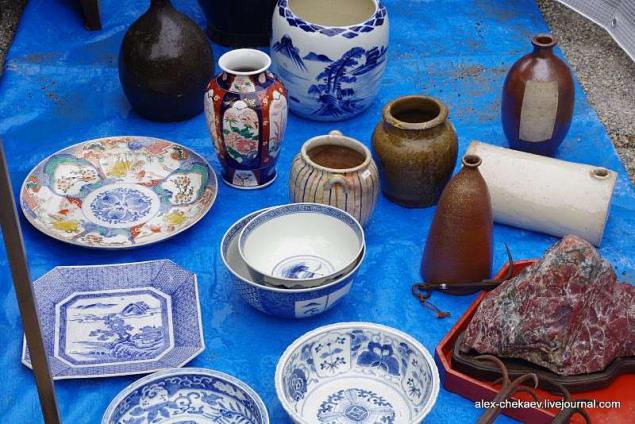
35. In the midst of the old dishes froze group of Shigaraki tanuki magic.
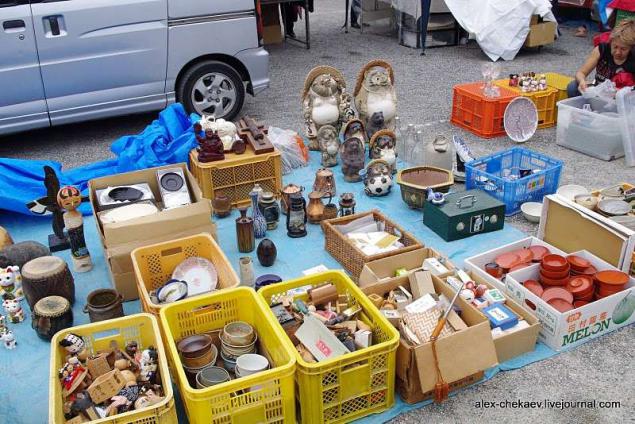
36. Football tanuki rare.
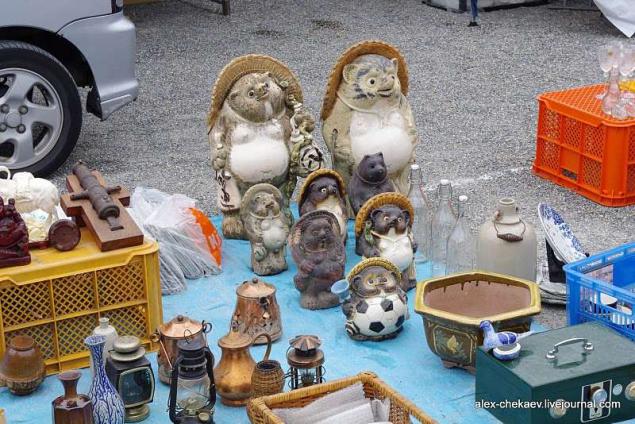
37.
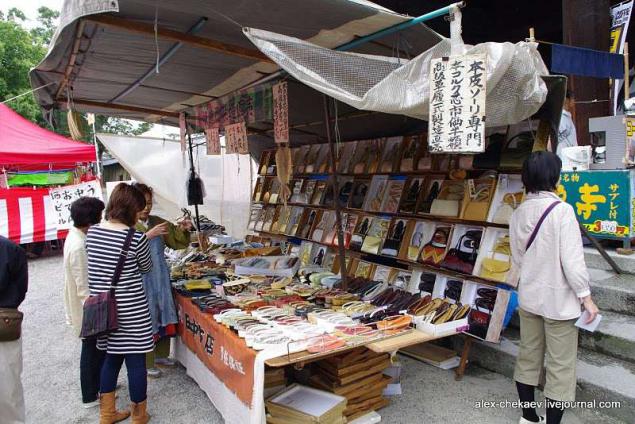
38. Caught shops with old books and magazines. There are stalls where they sell old musical records.
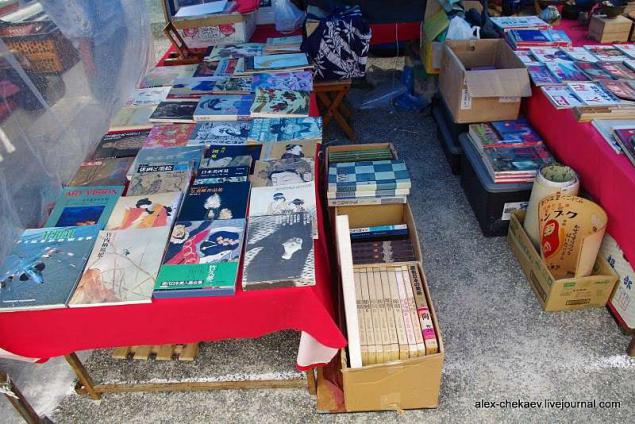
39. But what can be done with a simple knob. If you do not have bumps, it can be purchased on the spot.
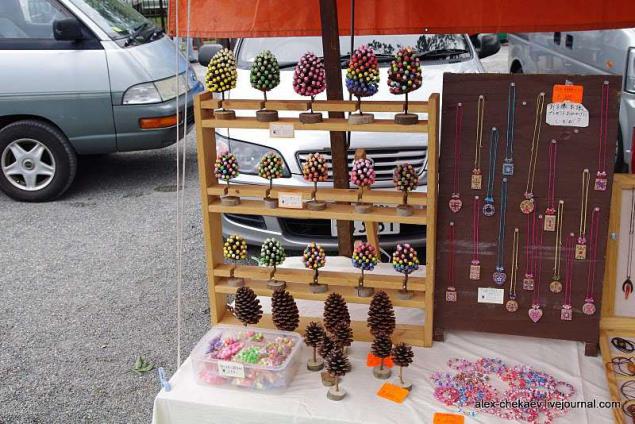
40. Musical tray at the southern gate of the complex. It sells pipes and flutes from bamboo. The seller is very masterfully strums known melodies, happy to talk and shows the difference between the different instruments and their sounds.
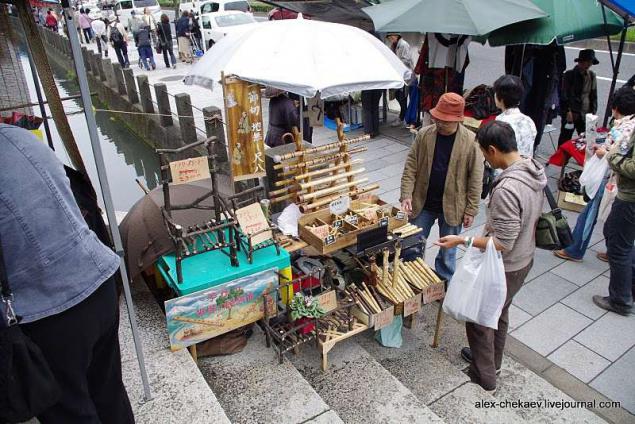
41. Those who came to the fair, and remember about the basic meaning of the day. In many churches held services and ceremonies.
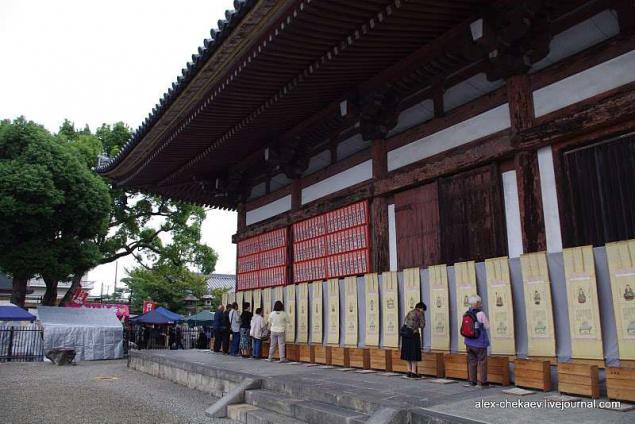
42.
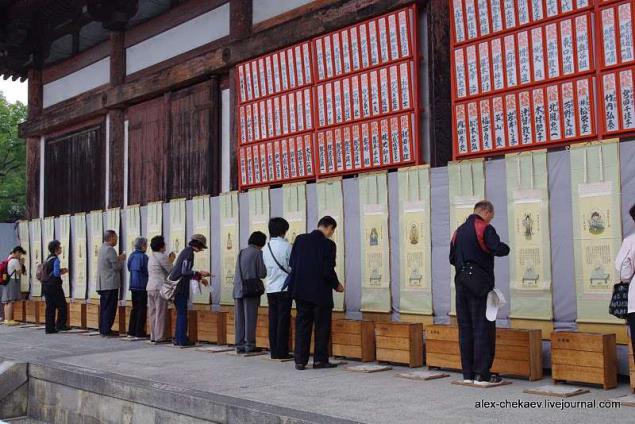
43. A gate low monk from some distant temple collects alms, like many centuries ago ...
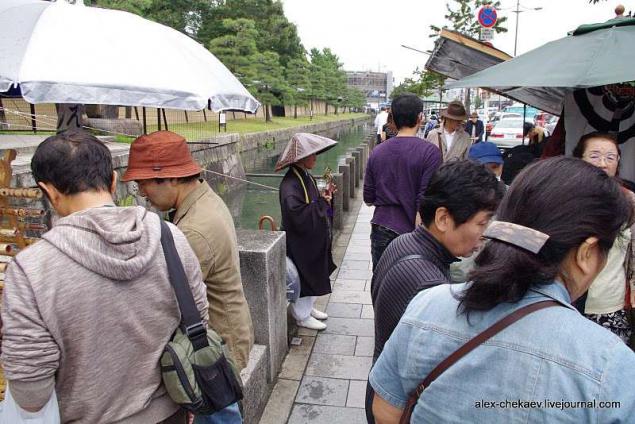
Source:
Flea market is held in the oldest kiotoskom temple Toji, once headed by Kobo Daishi. On the day of memory of the patriarch, the number 21 here, as in many other singonskih temples are memorable service.
43 photos via live_report
1. It has long been in those days, pilgrims flocked here, and that was the starting point for this popular flea market, which has become one of the attractions of the Old Capital.

2. These days the walls and on the territory of the temple complex - peer Kyoto - there are stalls and stalls selling everything you want.

3. Many people come here not only for shopping, but for new experiences, the atmosphere of the holiday and the market life. It is popular among tourists.

4.

5. On the shelves you can find everything from food and clothes to souvenirs, antiques and artwork.

6.

7.

8. Autumn in Japan is a season abundant Persimmon. Sometimes they say: "Taste of Autumn - Persimmon." However, as the taste of autumn is considered chestnuts and matsutake mushrooms.

9. "Persimmon mythical" - good as rumor

10. Persimmon these days very much - it is everywhere: in stores, in restaurants, on the trees and just in the land.

11. Here's another autumn taste - chestnuts. They are good in themselves, and cooked with rice and mushrooms.

12. Pickles, who once were one of the pillars of the Japanese diet, popular to this day. Variations of flavors across the country have made a great souvenir delicacy. Unfortunately, most of the foreigners do not understand their charm.

13. And this is another popular supplement to rice and other dishes "tirimen" - small dried fish.

14.

15. That "tea" from algae. Mekabu-cha.

16. Hungry visitors can snack dumpling octopus. This dish is called "takoyaki" (literally - fried octopus) and came from nearby Osaka.

17. Lovers of sweet - "fried sea bass" or "taiyaki." In fact, it is not bass, but made in the form of fish waffles stuffed with sweet bean.

18. Vegetarians can enjoy corn.

19. In the neighborhood are selling antique clocks.

20

21. Yarn and knitting go well in the pre-winter period.

22. But the counter with a variety of fabrics, colors and patterns.

23. There are trays of wicker - baskets. handbags. casket. interior.

24.

25.

26. Author's handmade knives.

27.

28. This artist sells funny signs. Some just decoration. some quite functional - the inscription "Do not disturb", "be back soon" made to order.

29.

30.

31. Who can tell what kind of balls and why they are needed?

32. Corner ceramics. There are many shops oochen not only in the market, but everywhere in Japan. Japanese love ceramics and are willing to buy her home or as a gift.

33. Tale!

34. Things are older.

35. In the midst of the old dishes froze group of Shigaraki tanuki magic.

36. Football tanuki rare.

37.

38. Caught shops with old books and magazines. There are stalls where they sell old musical records.

39. But what can be done with a simple knob. If you do not have bumps, it can be purchased on the spot.

40. Musical tray at the southern gate of the complex. It sells pipes and flutes from bamboo. The seller is very masterfully strums known melodies, happy to talk and shows the difference between the different instruments and their sounds.

41. Those who came to the fair, and remember about the basic meaning of the day. In many churches held services and ceremonies.

42.

43. A gate low monk from some distant temple collects alms, like many centuries ago ...

Source:
